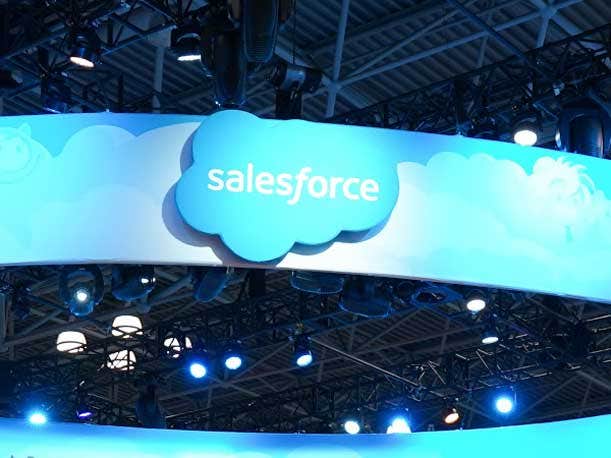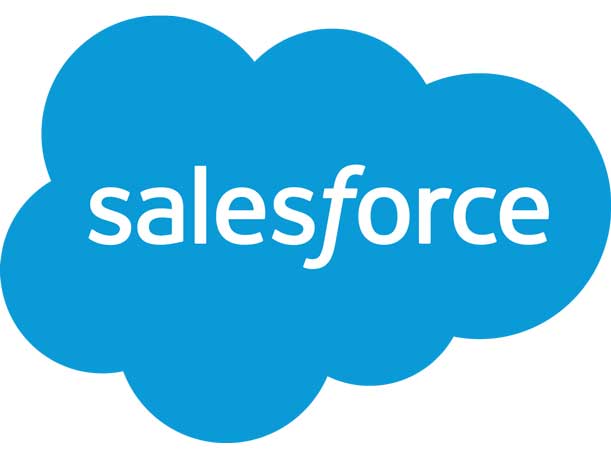Salesforce Q2 Earnings Preview: 5 Things To Know
These are among the subjects analysts are likely to raise during Salesforce’s second quarter earnings call Wednesday.

Salesforce’s generative artificial intelligence roadmap. Effects from the vendor’s recent price hikes. And increasing competition from Microsoft.
These are among the subjects analysts are likely to raise during the San Francisco-based customer relationship management (CRM) software vendor’s second quarter earnings call Wednesday.
[RELATED: Salesforce Enters The Generative AI Race With EinsteinGPT]
Salesforce Reports Q2 Earnings
This year has been a rollercoaster for the vendor, from activist investors to entering the generative AI competition with offerings including Service GPT.
At a June event, Salesforce announced an AI Cloud “starter pack” is available for $360,000 a year. Executives with the vendor said that customers have already started using AI offerings, with Einstein AI powering more than 1 trillion predictions a week across the Salesforce suite.
Salesforce CEO and co-founder Marc Benioff has called his company’s AI a “breakthrough” in security and trust for enterprise-level generative AI. He said that generative AI is “one of the most important technologies of our lifetime” and “maybe it’s the most important technology of any lifetime.”
“There’s no company that’s even close to what we’re doing in the customer relationship management area of artificial intelligence,” Benioff said. “And we understand the burden there that must be on us as we’re going to take this forward.”
Read on for the topics likely to come up during Salesforce’s next quarterly earnings call.

Generative AI Benefits May Take Time
Analysts will likely have questions for Salesforce executives around the vendor’s generative AI strategy and timing.
A July report from Morgan Stanley said that more users need access to Salesforce’s generative AI offerings before the vendor (and its partners) sees the benefits.
“With regard to generative AI announcements, limited access to Unlimited tiers in Sales and Service Clouds, as well as, uncertainty on access, capabilities and pricing of consumption credits (which are expected to be the more significant driver on generative AI-related growth vs. seat-based uplifts), keeps us from crediting the company more fully with near-term benefits,” according to the report.
It continued: “With a limited catalyst path, particularly given timing to realize benefits from Gen AI, we remain on the sidelines.”
Consumption credits hit profit-and-loss faster than seat-based subscriptions, according to Morgan Stanley. The firm estimates less than a 1 percent uplift to subscription bookings assuming that Salesforce’s Unlimited tiers account for 40 percent of revenue within the Sales and Service cloud and 25 percent of the Unlimited customer base purchases the $50 add-on.
An August report from Wedbush was more generous with the benefit to Salesforce from generative AI. The firm believes that Salesforce could increase overall revenue by $4 billion-plus annually by 2025 with its AI initiatives.
“There is clearly still more wood to chop to turn this growth story around but importantly we believe the tide has started to turn with this quarter another step in the right direction,” according to the report.

Price Hike Effects
Salesforce price increases took effect this month, and analysts will likely look for information from executives on the consequences so far.
The Morgan Stanley report estimated about $1.2 billion of incremental revenue upside – about 2 percent increase to the firm’s 2025 fiscal year revenue forecast – from the hike, according to the firm. This is Salesforce’s first broad-based price increase since 2016.
An August report from Bernstein said that clients have expressed concern “about how much real revenue can be generated and what impact it could have on the customer base/competitive position” from Salesforce’s price announcements.
“At a high level, we believe these steps will generate additional revenue, but this amount will likely be lower and also will layer in over a longer period of time than the more bullish commentary we have heard,” according to the report.
The Bernstein report further speculated that the Salesforce price hikes make it vulnerable to competitors including Microsoft, Oracle, SAP and Freshworks taking share.
“We also believe that they create an increased opportunity for competitors, which is not good at a time of increased budget pressure on IT, continuing reverberations on customer satisfaction, and relationships from the 10 percent employee cuts earlier this year/operational changes since then,” according to the report.”
Even with the price increases, contract obligations may drag out how long it takes for Salesforce to see any benefits, according to Bernstein.
“Most large corporate contracts limit price increases … (to) cost of living increases, and often they also include how much additional seats and products / modules will cost,” according to Bernstein. “While Salesforce’s average contract duration is a bit less than 3 years, many of the large contracts are longer. This will, we believe, drag out how long it takes the company to capture the upside.”
The Bernstein report speculates that Salesforce is replacing decelerating organic new sales driven revenue growth.
“While this is per se not a bad thing, it both signals that growth will be slower and creates a bigger discrepancy between Salesforce’s pricing and competitors which offer similar functionality at a lower price point (and in the case of Microsoft include AI functionality),” according to the report.

AI Competition From Microsoft
Not only might Salesforce need time to realize the benefits of generative AI, but the vendor faces steep competition from Microsoft’s AI offerings, according to an August report from Bernstein.
While Microsoft’s $30 a user a month for Microsoft 365 Copilot is a higher unit price uplift than Salesforce’s prices, Microsoft has been bundling other copilot offerings. The vendor said that Sales and Service copilots are included with existing Dynamics 365 Sales Enterprise and Premium licenses, according to Bernstein.
And Viva Engage Copilot is included with Viva Engage, which draws in data from Dynamics 365 and Salesforce. Viva Engage is free with M365, giving the 160 million M365 business users access at no additional cost. These users also receive Bing Chat Enterprise for free.
Dynamics 365 costs between $95 and $135 a user a month. Service lists for $50 to $95 for the first application and lower for the second.
“We are concerned that Salesforce is going to have difficulty monetizing AI,” according to the report. “The reason is Microsoft. … Some of the most visibly valuable sales and service centric generative AI capabilities, especially for email correspondences, are included in Microsoft 365 and can be used by Salesforce customers.”

Long-Term Looks Favorable
Still, despite the negatives, Bernstein and Morgan Stanley had positive remarks on Salesforce’s long-term opportunities.
Morgan Stanley said that “Salesforce remains one of the best secularly positioned names within Software, as the global incumbent for front-office applications and a platform squarely addressing many of enterprises’ top digital transformation needs.”
The firm is “confident in Salesforce’s longer-term opportunity to further penetrate large enterprises with more vertically-oriented solutions,” according to the report.
Bernstein also clarified that the firm is “not writing Salesforce off in AI.”
“The company has some serious expertise and historically could be very aggressive when they saw an opportunity,” according to the report. “We just believe that the pricing, combined with competitive dynamics (both pricing and capabilities) limits the upside at this time.”

Positive News From Tableau, Slack
Looking at the quarter, a Monday report from Wedbush predicted positive news from Salesforce thanks to cost cutting, strategic focus and improved margin ramps and growth prospects.
The firm expects Salesforce to “modestly beat” Wall Street expectations.
“Over the last year Salesforce had their back against the wall with activists swirling, growth/margins less than stellar, and Street skeptics building a wall of doubt,” according to the report. “Fast forward to today and Benioff & Co. have pulled a comeback story for the Street’s history books.”
Based on Wedbush’s research, Salesforce saw greater cross-selling activity during the quarter, particularly with Tableau. Although, Salesforce is still “battling through various headwinds” with the economy as business spending on technology has slowed since the height of the pandemic.
Wedbush also reported strides in Salesforce integrating Slack into the broader product suite. “This could fuel some major collaboration deals we believe as the pipeline is finally starting to build on this key acquisition,” according to the firm.